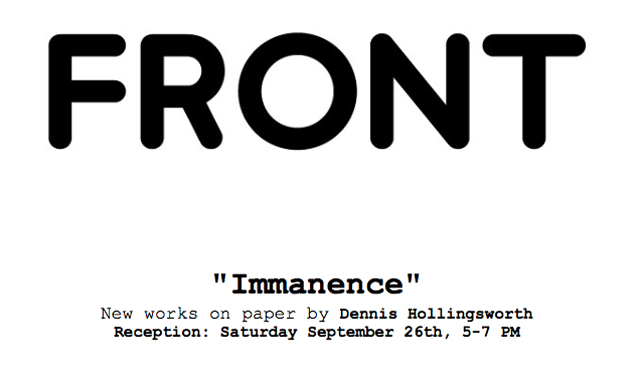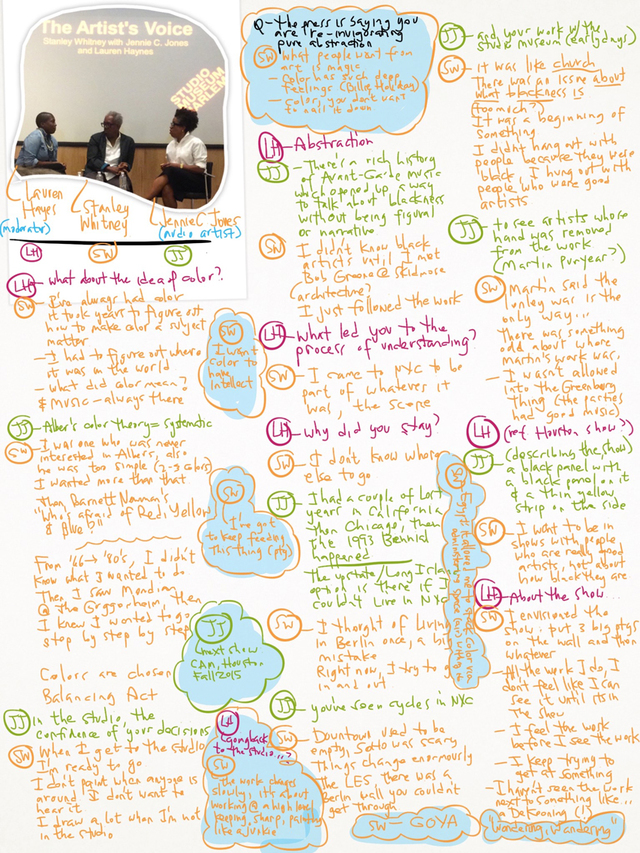September 23, 2015
¡Cuidado con la Urraca!

All is fair when it comes to stealing from a magpie*, especially from one as famous as Picasso. MoMA has cleared a whole floor of its' permanent collection to showcase Picasso Sculpture (September 14, 2015-February 7, 2016) and the critical acclaim is as unified as it is ecstatic. I consider the best exhibitions are the ones that generate within me, the impulse -the greater the urge, the better- to get back into the studio. That's quite a feeling, a wonderful tension, to simultaneously leave the studio with the urge to see art and to see art and feel the urge to get back into the studio again, posthaste. I've already visited this show twice, I expect to see it a few more times, so laden this magpie nest is with treasure.
However...
Have you noticed the tendency of artists who have pilfered from this particular nest to languish ...too strong a word, probably, but it has the power to convey the problematic aspect I want to communicate here... to relax ...too soft a word, it conceals the problem... under Picasso's shadow. Jerry Saltz touched on Picasso's influence: "...galleries packed with uncovered information for artists and viewers, single works that can detonate into whole careers...", but should he have also edited out the single word "into" from that sentence as well? A career can seem to detonate when it is revealed that it is merely so. Touring the exhibition, a multitude of resonances of subsequent artists' oeuvre reverberates in the mind... first, a pleasant thought and then a kind of dread creeps in. It was Picasso's coinage of the difference between borrowing and stealing that unfurls the caution flag. If you are to steal from this particular magpie's nest, do it with extreme prejudice.
There is another issue to consider as we rifle through this nest. My dictionary tells me that the noun magpie refers to "...a person who collects things, especially things of little use or value, or a person who chatters wildly". Certainly we've established in the last paragraph that if an artist only borrows from this particular magpie, the item in question will surely become of little use or value principally because it will remain Picasso's intellectual property. But beware, the thief who is only interested in formalism. The energy in Picasso's contribution to art history comes from the peculiar wave he was surfing. This wave had specific characteristics:
1) the interiority of perception of the impressionists that was translated as the isolation of the brushstroke (Seurat's pointillism, Monet's waterlilies, later as Van Gogh's wild strokes of color)...
2) the transition and enlargement of the atomized brush strokes into Cézanne's visual patches...
3) the relaxation of academic representation via the influence of indigenous art...
4) a fusing of Cézanne's patchwork visuality with the image of the specific nature of Spanish urbanism, a perspective from an elevated, isometric projected panorama (I noticed this while living in Catalunya, the elevated view of the village or city looks cubistic, a panoply of planes canting this way and that, the residue of an urbanism that was singularly focused on the street and not the rooftops)...
5) there was a movement towards abstraction that was restrained by Picasso's commitment to motif that restrained Him from launching his oeuvre completely into non-objective abstraction as did the Russians such as the constructivists and the Suprematists (but not exactly the father of the latter, Malevich, since I believe he scrambled his timeline and toggled between"pure" abstraction and representation)...
6) the art form of collage had just burst onto the scene of art history. It was the embodiment of the age, especially one so fractured by WWI and the multitude of soldiers mutilated by the industrialization of warfare. Dada was born of this. Influential critics in Picasso's circle such as Bataille was allegorizing/fetishizing collage as dismemberment.
It was all of these influences and Picasso's particular attitude that led to his artistic achievement.
So.
So, if an artist was to steal, why content oneself with a keepsake or souvenir when you can take the code or software? And if you are game to emulate Picasso's conceptual feat, (good for you), just what is the contemporary analogue to the dynamics of early modernism? One can't simply transliterate historical dynamics a hundred years forward, willy-nilly. Just what are the characteristics of our era and what exactly is the type of attitude that transmutes mere aspects into icons?
* I'm lifting Roberta Smith's most appropriate use of magpie in her recent review.
September 18, 2015
Immanence

Immanence
New works on paper by Dennis Hollingsworth
September 26 - October 24, 2015
Reception for the artist: Saturday September 26th, 5-7 PM
September 14, 2015
FRONT

Next week, I'll be in Houston for the opening of a few paintings on paper at Front Gallery. More info to come soon, stay tuned to this blog.
September 8, 2015
Sargent, Bound.

Go to the Met and take a close and long look at this sleeve.
Here are a few stubborn thoughts of mine after seeing the Metropolitan Museum of Art's Sargent: Portraits of Artists and Friends last week (on view until October 4th, 2015). Seeing the show, I immediately understood the profound motive of his work, the influence of his first teacher, painter Carolus-Duran. From the wall text adjacent to Sargent's famous portrait of his instructor:
Sargent entered Duran's studio in 1874 and became his star pupil. Duran's approach was radical: he encouraged his students to draw and paint simultaneously, using a loaded brush.I thought quite bit about this simultaneity of drawing and painting as I looked at the cuff of Carolus-Duran's shirtsleeve as it stuck out of his jacket. Drawing is the making of distinctions, it is a fixation. The delineation of a line separates one (thing) from another (thing). It is a clarity that tends to the diagrammatic, information tends to focus into a signal singularity. Paint pools, it is molten, liquid, it tends to blend, drip and bleed. Information tends to spread, blur and multiply. To do both of these two opposing acts simultaneously... and more: to do it many times in an interconnected manner, a veritable concatenation of multidimensional gestures that gestalt into an image that rivals photography.... now, this is, this was an immense talent.
And still. And still.
Portrait after portrait, gallery after gallery, I began to get a sense of how he was circumscribed by his talent for verisimilitude, and also by the classical model that knew only a limited set of the modes of painting (still life, portrait, landscape, etc), the classical regime. It was the inspiration of the facture of Velasquez that could have led him out of this cul-de-sac, of the court painter's rigid obligation to render portraits and little else. His life started at the same time as the birth of photography, and also the ticking of the doomsday clock for the end of the imperative for verisimilitude in painting. He was exposed to the impressionists and yet seemed not to have absorbed the import and impact of that movement. Impressionism was well named. Their revolution was to paint with fidelity the immediate sensation of visuality, unmediated by mental conditioning and forces of cultural convention. It was as if they painted what had arrived in the chamber of the eye before this information was processed by the brain. This was a literal impossibility of course, but they tried, and what they did was to overturn the conventions of classicism, of the art they inherited. They opened the door for the abstraction to come. The attempted isolation of sight from mind (or better: cultural memory) led to the subsequent isolation of each daub of paint from others on the canvas, which in turn led to the recognition of the constitutive elements of visual perception, which in turn led to abstraction. The Impressionists started down the road to modernism both post and neo, they did what every generation of artists are obliged to do: to make art their own. Sargent was painting within the confines of classicism when at the same time, at the turn of the new century when Picasso was breaking representation with African masks, Delaunay was hyper driving into Orphism and Malevich achieved his Victory over the Sun.
Sargent ultimately did not make art his own. From Wikipedia:
Of Sargent's early work, Henry James wrote that the artist offered "the slightly 'uncanny' spectacle of a talent which on the very threshold of its career has nothing more to learn."Sargent was 23 at the time.
Gallery after gallery, deeper into the exhibition I roamed and a shadow oft sadness crept over me. I not only sensed that Sargent tired of portraiture, but the exhibition took pains to show that he thought his escape was landscape painting. But landscape is but another mode, another horizon already explored, mapped and purchased by epochs of previous generations. His real salvation was hiding in plain sight. Sargent was handcuffed to verisimilitude but his teacher had already handed him the key. To draw and paint simultaneously, using a loaded brush, this was the way out of the corner that he had painted himself into. All he had to do was to release the task of the talent of his loaded brush and direct it toward... away from verisimilitude... and towards what painting would become, towards painting unbound, towards the beginning of abstraction.

September 5, 2015
Civil Wars & Utopia (hecho de menos, Catalunya/España)
Two interesting videos about Spain that focuses on Catalunya and its 300+ year old Spanish history.
"Spanish Secret Conflict" is excellent, balanced and well sourced. Gary Gibson did a superb job sourcing out opinions on both sides at all levels of sophistication. I particularly like the intercultural interviews of those Spaniards both Catalan and Castilian who celebrate and respect each other. At time=14:20, there is a married couple whom I would take to be the most favored emblem of what could be the best future for Spain and Catalunya. This is my political position on the matter: hug it out. Butterfly kisses. (A better translation of the hugs and kisses solution: a newly wrought federalist system, a lower fiscal deficit and more intercultural exchanges and celebrations that could mix Spain better within itself.)
I don't know how balanced the second video is, "Living Utopia", but I found it to be an interesting account of the birth, spread and fall of Catalan Anarchism. It reflects what I learned in reading Orwell's Homage to Catalonia, the solidarity he encountered and the tragic civil war within a civil war that wrecked their dream, a recurring theme in the Left in general and in Catalunya specifically. I had come to recognize this theme this summer while reading Albert Sánchez Piñol's "Victus, the Fall of Barcelona" at the suggestion of our close friends and neighbor in Tossa, Tony and Ana, who, by the way, are ardent Catalan Independistas.
